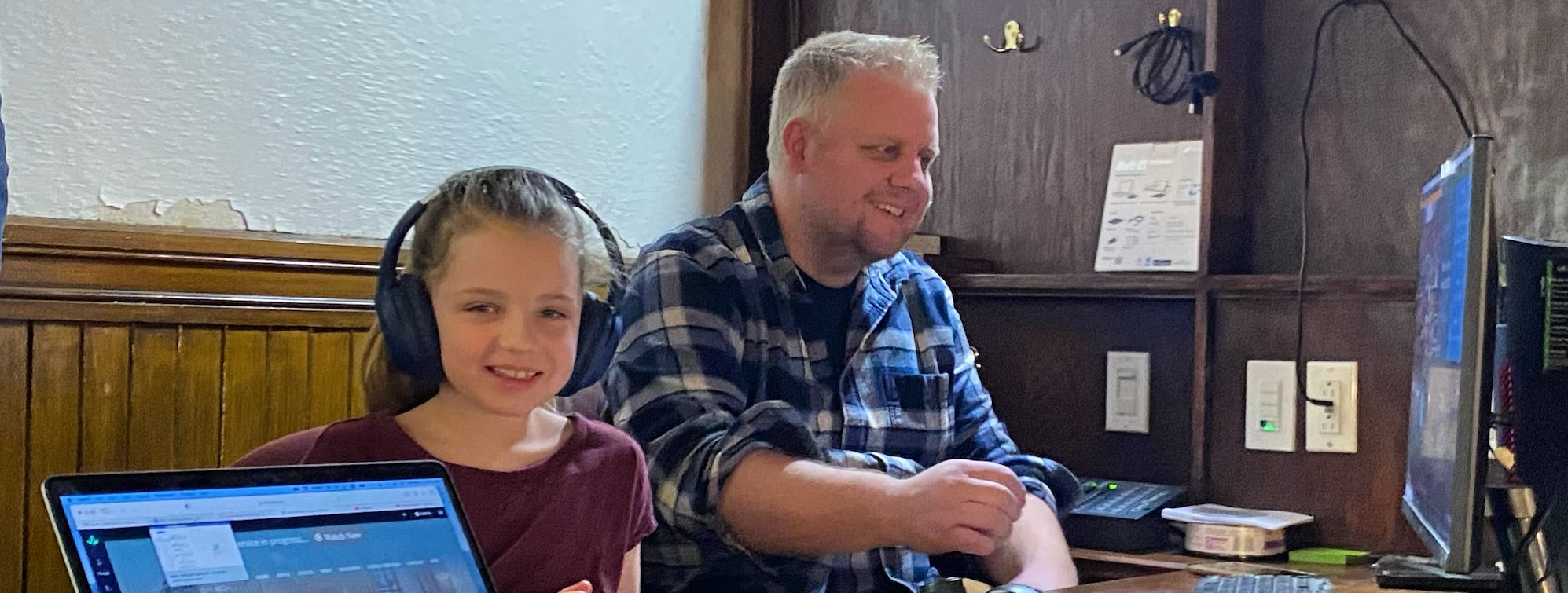Introduction
Countless places exist in a child’s life where they are measured, assessed, and expected to perform or make progress. The church ought to be different. It should feel different to children. The experience of belonging is vitally important to healthy faith. But while we can say the words, “You belong here,” it’s the experience of belonging that matters most. So, in the church, we can’t just tell children they belong with our words, though that is important. We have to say it in a variety of ways to help them to experience church as a place where they belong.

Here are five ways your church can “say” that children belong with more than just your words:
1. Say it with your spaces!
Spend a few hours one day experiencing your church building as a person who is about 3-4 feet tall. What is that experience like? What adjustments can you make for children that can help them to feel at home in your space? Consider adding things like worship bags, illustrated hymnals, or a card welcoming children in your worship area. Can the children see what is going on during worship? Some churches have added dedicated spaces for children within the sanctuary. Does your church offer welcome bags to visitors or guests? What would it be like to include something specifically for children or to create a special gift bag for new children who visit?
2. Say it with your words!
Just because words aren’t a sufficient way to communicate a child’s belonging doesn’t mean you shouldn’t actually say that children belong. Be sure that you frequently communicate that children are an important part of your congregation’s life together. The way that pastors and leaders speak about children will directly impact the way that your church treats children. Consider children as you prepare for sermons and other public times of sharing.
Here are a few ideas:
- Can you add an example that children would understand? (i.e. “whether you’re at work, school, sports practice, etc.”)
- Can you specifically speak to children about their experiences? (i.e. pastors can choose sermon illustrations that are common childhood experiences)
- When writing communal prayers, think specifically about children’s concerns and include them in your prayers. If you can’t think of what they might be, ask a child!
- Pastors and other leaders can (and should!) directly say the church’s value of children and periodically reinforce a high view of children from the pulpit throughout the year. (i.e. “We welcome children because we believe they are a part of the body of Christ. We welcome them as children, with all their wiggles, noise, and needs, because that is how God made them. Children, we are glad you’re here. You are an important part of God’s people, and we need you with us.”)
3. Say it in your service!
Make opportunities for children to participate in the life of the church and to serve their fellow congregants. Children can act as greeters, ushers, by helping on the worship team, or with reading scripture. Some churches also plan annual or semi-annual services where children are responsible for the planning and execution of the worship service. A growing number of resources are available to you as you seek to include children as leaders in worship including lectionary passages written in a child’s voice, this call to worship written to be led by a child, and creative ideas for engaging all ages in worship, sortable by topic, lectionary, and scripture passage.

4. Say it to their faces!
When you, as a ministry leader, find yourself speaking to children, get down on their level. Bending down so that a child can look in your face or sitting down so that you are at a more even level can help them feel like they belong. Because children are a part of the flock pastors are called to shepherd, pastors ought to make an effort to know and be known by the children in their congregation. If you are a pastor who wants to think more about what it means to shepherd children as a part of your congregation, check out Let the Children Worship by Jason Helopoulos.
5. Say it like you mean it!
Does your church have opportunities to bless children and to include them in the regular worshiping rhythms of the congregation? This will look different at every church! Some churches invite children to come forward for communion with their families to receive a blessing from the pastors and elders. At another church we know about, the children always give the final blessing to the congregation. At other churches, as the children leave the sanctuary for the children’s service, they bless the adult worshippers before the sermon. Consider the rhythm of your congregation’s worship service. Where can you incorporate rhythms to minister directly to children or to receive ministry from them?
Where does your congregation excel at showing kids they belong? We’d love to hear about it!
